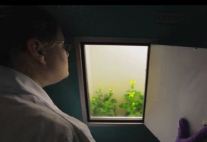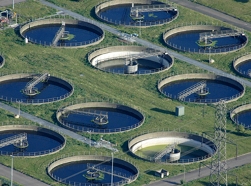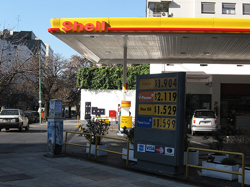In order to make manufacturing a sustainable process, companies must green their supply chains by sustainably sourcing materials, reducing the carbon footprint of factories and transportation, and properly disposing of old products.

Molds are commonly found in homes and commercial buildings, and if left untreated can cause health problems to those that are exposed to them.

Environmental sustainability is being increasingly linked to initiatives in “lean manufacturing”, an area in which U.S. manufacturers have excelled for years. The focus of lean manufacturing is to reduce waste—wasted materials, motion, time, effort, inventory, transportation expense, and other expenses involved in the manufacturing process.

Do your own, personal part in making proper decisions about recycling e-waste. Don't be afraid to call someone out or voice your opinion about how important our planet is and what it means to you.

As the industry waits to see the impact of the FTC Green Guides, there is no question that the issue of managing and controlling information will continue to rise throughout 2013.

The business case for it is stronger than ever, said Dow's vice president of sustainability and EH&S, Neil C. Hawkins.

Since the establishment of a state program that donates money to cities and counties for parks when affordable housing communities are built, California has received more than $20 million in funds.

Green building and energy efficiency retrofits of affordable housing not only help struggling families find decent places to live, but also help create more jobs for the economy than traditional building methods.

Three companies have collaborated on a new water test cartridge and automated monitoring system.

To reuse water requires capital that they would rather not spend if it's cheaper for them just to dispose of it. I think that's why we don't reuse that much. It might be more cost effective to figure out a way to reuse it than it would be not to.

Electromagnetic flowmeters (EMFs) are the leading choice for recording the volume flow of electrically conductive liquids in a wide range of industries, including chemical, pharmaceutical, water/wastewater and food.

The popularity of fluorescent lamps and compact fluorescent lamps (CFLs) is steadily growing in the industrial, commercial and residential markets. However, they can also be potentially dangerous because of their mercury content.

There’s a lot of moaning and hand-wringing whenever gasoline prices approach $4 a gallon. But all it would take for them to hit $10 a gallon overnight would be hurricanes wiping out a couple of refineries or saboteurs disabling a couple of pipelines, says Dr. R. Paul Williamson, founder and CEO of the non-profit Sustainable Systems of Colorado.

When it comes to the political arena in Washington, D.C., most of us see the same thing – the 30,000 foot view. We see and talk about the contentious debates taking place on the economy, health care reform and energy policy.

Nearly everyone can recall being told to conserve water at some point in our lives…turn off the faucet while brushing your teeth, run the shower only just before entering, don’t wash the car during particularly dry summers. We viewed these directives as minor inconveniences -- the idea of communities experiencing serious water shortages was reserved for developing nations.

Baylor Charles A. Sammons Cancer Center in Dallas, Texas, has been at the forefront of cancer care and research for 35 years. In 2011, Baylor introduced North Texas’ largest outpatient cancer center; a 458,396 square-foot, 10-story facility featuring a striking modern architectural design by noted architectural firm, Perkins + Will.

In California, products banned from landfills exceed $500 million annually, according to a report done by the Department of Resources Recycling and Recovery (CalRecycle). There is no estimate of the total cost of collection and disposal.

The U.S. Army is leading the march for renewable energy with a goal of 25 percent clean power by 2025. The Army Corps of Engineers has set up the Energy Initiatives Task Force (EITF) as of September, 2011 to help meet the deadline.

According to the International Organization of Motor Vehicle Manufacturers, global automobile production will increase three percent this year – an industry growth trend with potential environmental impacts.
- By Matthew Brest, Scott Hudson

Companies deploy social media to raise awareness and encourage change in honor of World Water Day, March 22.